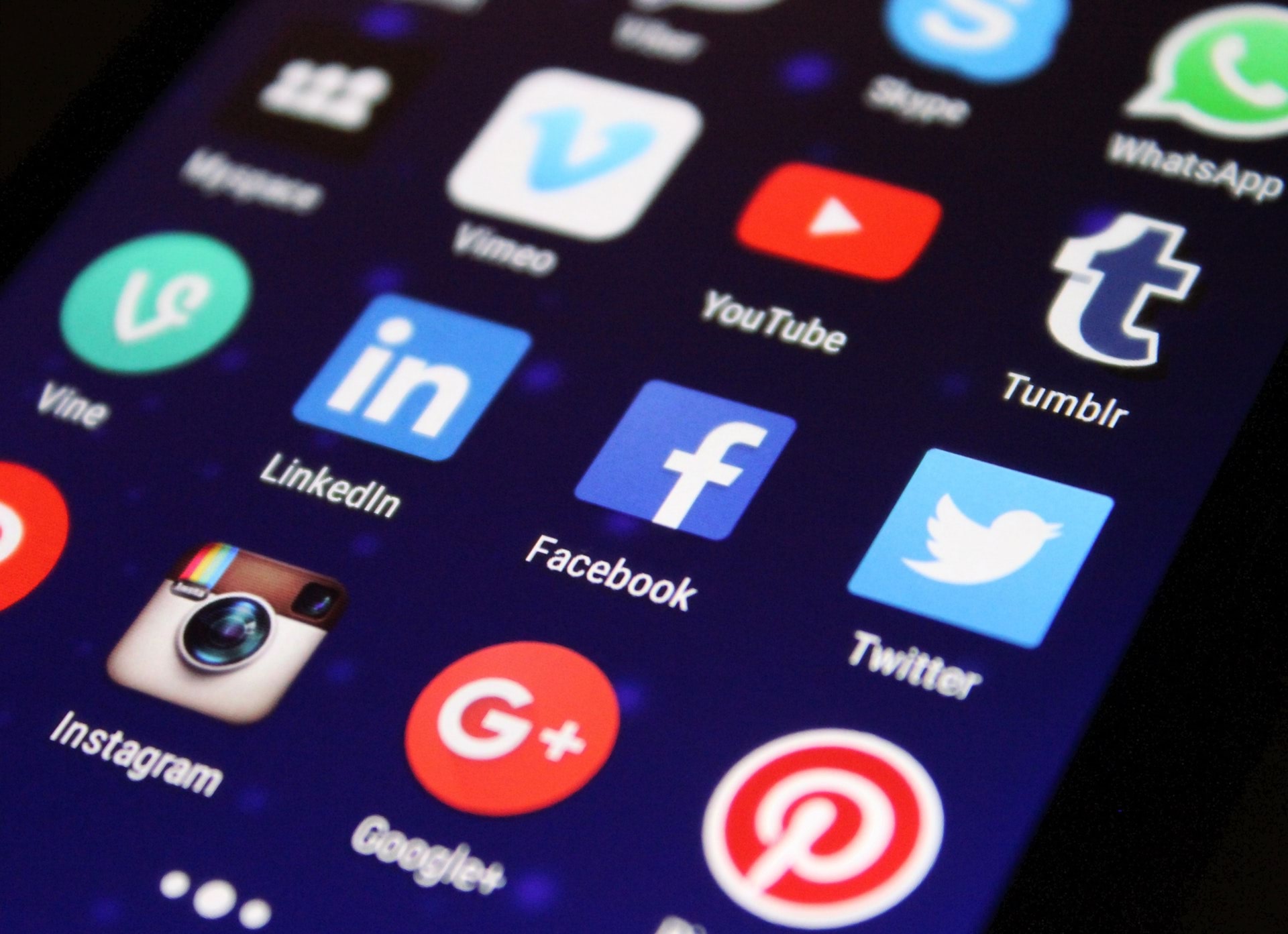One of the first challenges to build a great social media customer service is to define the places your company should be.
While marketing covers specific spots where leads and customers hang, customer service teams have to be sure they are at the right time in the right place to get the best engagement.
To find out where customers hang, a social listener would be a great help to get your strategy started.
At Crisp, we use Mention to help us to jump in conversations we haven't been able to follow. But, we also use Crisp as a way to deal with our social messaging customer service.
As you'll see in this article, New trends are rising and being adopted fast over the social messaging for customer service, an inner trend of social media customer service.
You've got it, over this article, you'll get everything you need to make the most out of your social media customer service strategy.
Here is what you'll get by reading this article:
- 4 reasons why social media customer service is vital for your company 🧐
- Best social media customer service examples you'll want to copy 🤤
- 4 tips on how to improve your social customer service the best way 📚
What is social media customer service?
Social media customer service is the art of providing customer service through social media channels such as Facebook, Line or Twitter.
Mainly, social media customer service is seen as the art of answering customers' comments, mentions or conversations.
Nowadays, customer service is also all about answering direct messages from customers with the rise of conversational experiences.
As 35% of American customers post negative comments about companies on social media, companies need to be responsive over these channels.
As stated, 40% of customers are getting in touch with companies over social media because they had a bad experience. Furthermore, they may be around 30% to need help with the product while contacting your business.
https://media.sproutsocial.com/uploads/Sprout-Social-Index-2019.pdf
Social care isn't something new nor multichannel customer service and that is why social media customer service has become increasingly important for every company.
Why is social media important for customer service
Many reasons are stating why social media is important for customer service. Over these quick statements, you'll better understand why you should improve your customer service over social media channels.
Be where your customers are
As 79% of American internet users are on Facebook, making it the most popular social media platform, companies should also be there. Listening, answering and providing support before customers get in touch with companies is the best way to create a great relationship.
At Crisp, we are present over Twitter, Facebok, Telegram, Line, WhatsApp and Youtube. For a team of 8 people, that is quite numerous. We're able to handle all these channels thanks to our shared inbox that allows us to centralize our messages into one dashboard.
Thanks to this tool, we are able to have a mean response time that is, on average, around 10 min.
Answer their questions
As 88% of customers will not buy your product if you don't answer their questions, being responsive and efficient is a must-have for your strategy.
https://www.verint.com/Assets/resources/resource-types/datasheets/social-engagement-datasheet.pdf
Part of your strategy is about analyzing the content of the conversations. Origins also matter.
Depending on the volume of interactions and the content, companies may need some time to gather enough data.
Here are few questions you could ask yourself when gathering enough data:
- When are posted those comments/messages? (think about days/hours, actions)
- What stages are these leads/customers over the lifecycle?
- Do I have enough content available to answer every questions?
Answering these questions will help you to define priorities for your team: Should you focus on content creation, team staffing or automation?
Responsiveness is the key
Previously, live help was often linked to a phone call or live chat. With the rise of messaging app such as WhatsApp or Facebook Messenger, companies now have to deal with customer messaging channel. Over these channels, responsiveness is the key.
As 71% of consumers (age 16 - 24) believe that a quick response from your service team can drastically improve their customer experience, it's now a must-have to be responsive and efficient while responding to the customer.
https://www.comm100.com/resources/infographic/millennials-prefer-live-chat-speed-convenience/
As a best practice, always answer the customer, even if you don't have the definitive answer yet. Simply tell them, you'll get back to them later. It's always better than nothing and it set expectations.
More than simply answering, the quality of your answer and the responsiveness of it will be taken into account when considering the quality of your service.
There are numerous reasons why companies should set a customer service strategy over social channels but we think these are the most valuable assets to convince your teams.
Move over to private channels
A bad reputation can be lead to poor customer service but also a lack of privacy. As it is now possible to bring customers or leads to private channels such as direct messages.
Private messaging took over public messaging in September 2017!
https://www.verint.com/Assets/resources/resource-types/datasheets/social-engagement-datasheet.pdf
Furthermore, the rate of growth for private conversations has grown an impressive 20x compared to public conversations.
Welcome to the world of social messaging!
Social media customer service examples
To help you better understand social media customer service, we thought some examples would help you to better understand how it can improve your customers' satisfaction.
As a subdirectory of social media customer service, social messaging has become an interesting trend but few companies are still aware of this new challenge.
Impressive responsiveness
Nike has one of the best social media customer service strategy. Simply monitor how they deal with customers' request to understand how they are able to support their customers.
Even if they get flooded, they're always able to answer mentions and conversations over different languages.
DM us with the order details, Jonny. We'll can help you set up a return. 👍 https://t.co/dsJjx1OYXB
— Team Nike (@teamnike) August 21, 2019
3 hours later, they were able to answer this first mention and help the user by going private. It means, using the direct message to deal with specific information about the customers' requests.
A great example of how you can combine social media with social messaging!
High personalization
Personalization is known as one of the best way to increase customers' satisfaction when resolving a thread.
Starbucks nails it by getting personal with their customers.
We're sorry to hear that Rob! Could you drop us a DM so we can follow up?
— Starbucks UK (@StarbucksUK) January 20, 2020
And there are more examples that you can look for by browsing companies' public pages such as on Facebook or Twitter.
Social media customer service best practices
As we've been over some examples, it's now time to provide a non-exhaustive list of advices that could help you to build a better social media customer service.
As we've been over social messaging too, we've included some tips on this part too.
Build an autoresponder on every channel
Social media customer service is time-consuming. It's even more true for social messaging. You have to make it scale as your company is growing. To help you with, most of the companies are now offering autoresponder for social messaging.
It means, for one scenario you'll build, you'll be able to answer multiple channels at once.
Social messaging autoresponders are powerful as they can trigger on specific keywords so you can personalize the experience.
Leverage the power of shared inbox
As stated previously, a shared inbox is a tool that allows you to bring your team around one tool. These tools often support emails, social messaging channels and multiple other features such as chatbots, knowledge base or routing rules.
By centralizing all your social messages coming from different channels, you'll bring collaboration to another level and help your teams get more work done.
A shared inbox allows you to automate conversations assignments based on customers' origin or type of request which is great! No more waiting period.
Make your customer service more human
In an era of automation and robot, people tend to need a human relationship. For every interactions, you should always present yourself.
An updated profile picture should also a good way to showcase how human your team is when building a customers' relationship.
Promote self-service and autonomy
Self-service is the masterpiece of your social media customer service strategy. It allows customers to find an answer by themselves and decrease the number of contact your support team has to handle.
Plan your social media publications
Planning is always better because it helps you to prepare the content you're going to talk about. To do so, you can use a tool such as Swello which comes with the handful list of features like scheduling, team collaboration or analytics.
It's also great for SEO if you choose to build a public knowledge base.
A knowledge base, also known as help center, is a part of your website where your customers can look for a resolution guide without having to get in touch with your company.
As you've understood over this article, social media customer service is becoming a norm and every company should afford the budget to succeed.
Other tools, such as social media management tool are also a way for companies to better scale their customers and leads relationship.
With the rise of social messaging app, a new model of customer service is rising: social messaging that brings customers to chat in real time with customers overs apps such as whatsapp, Facebook Messenger or Twitter DM.









